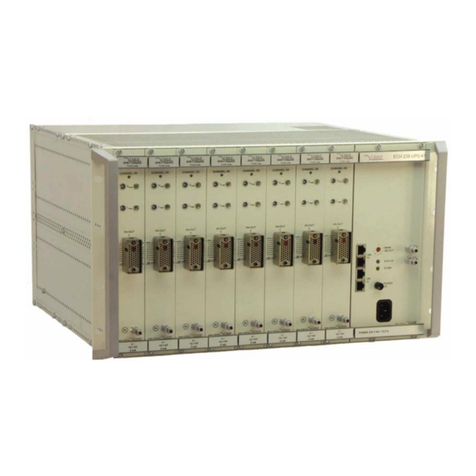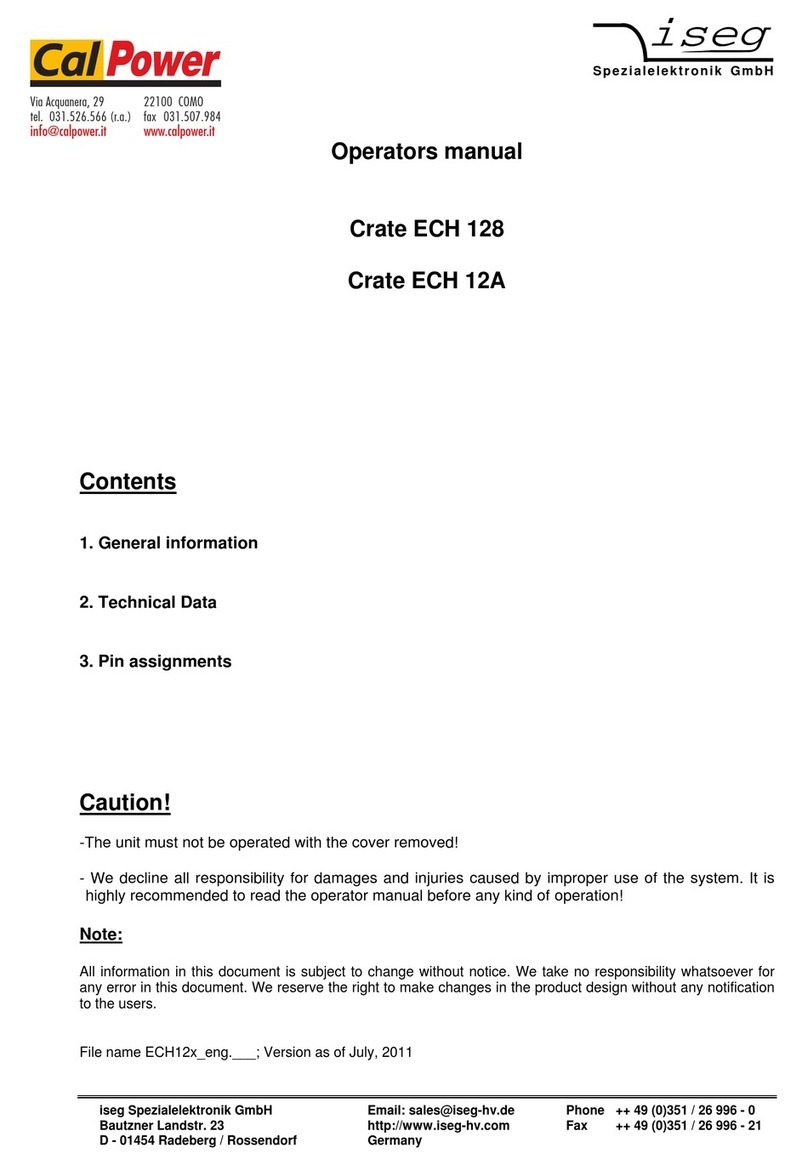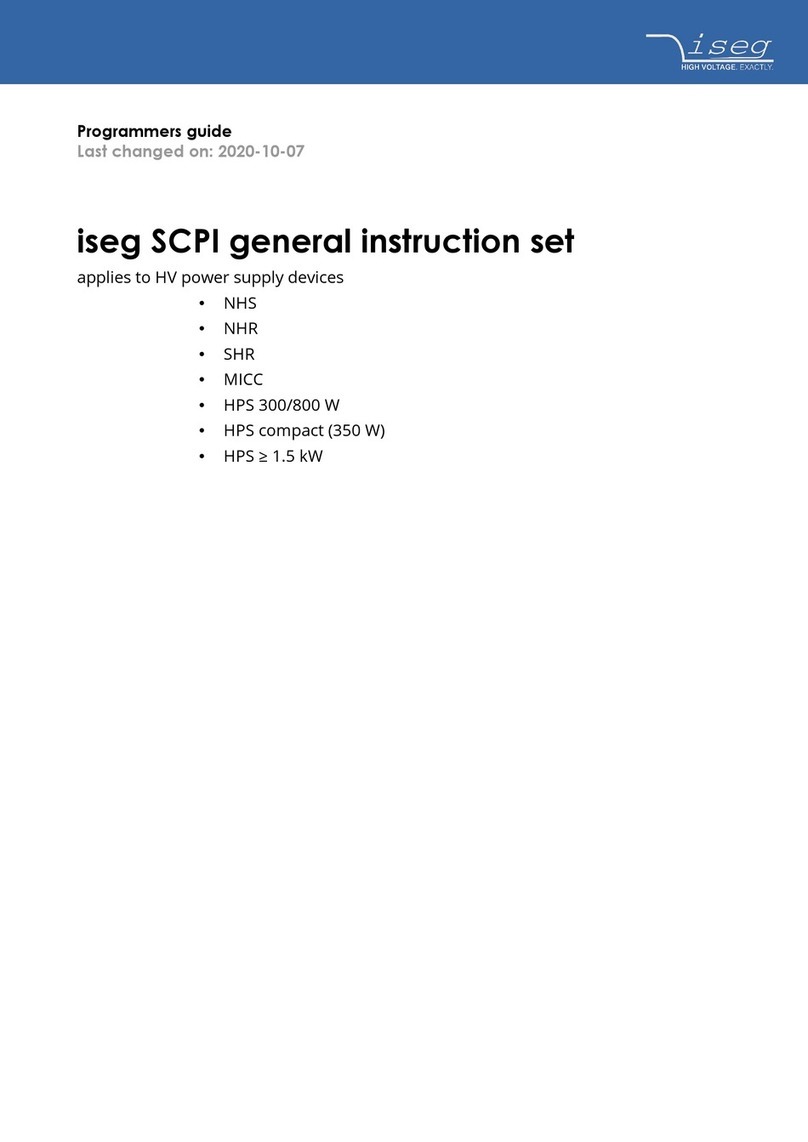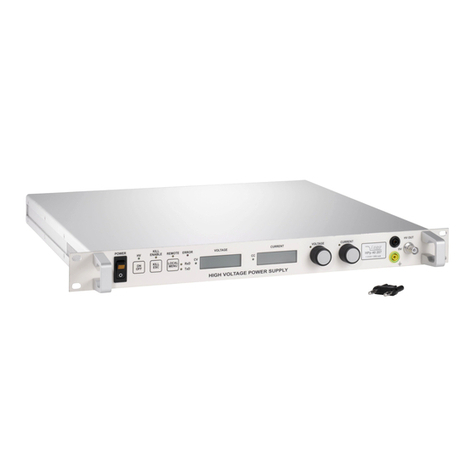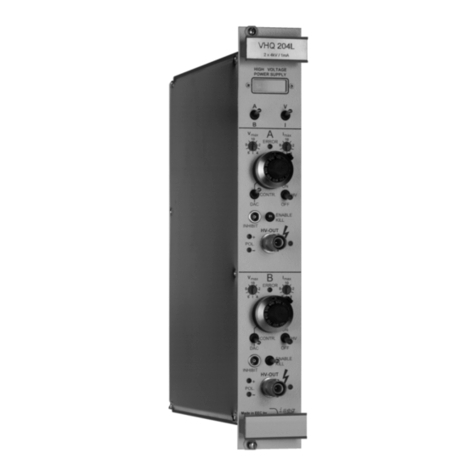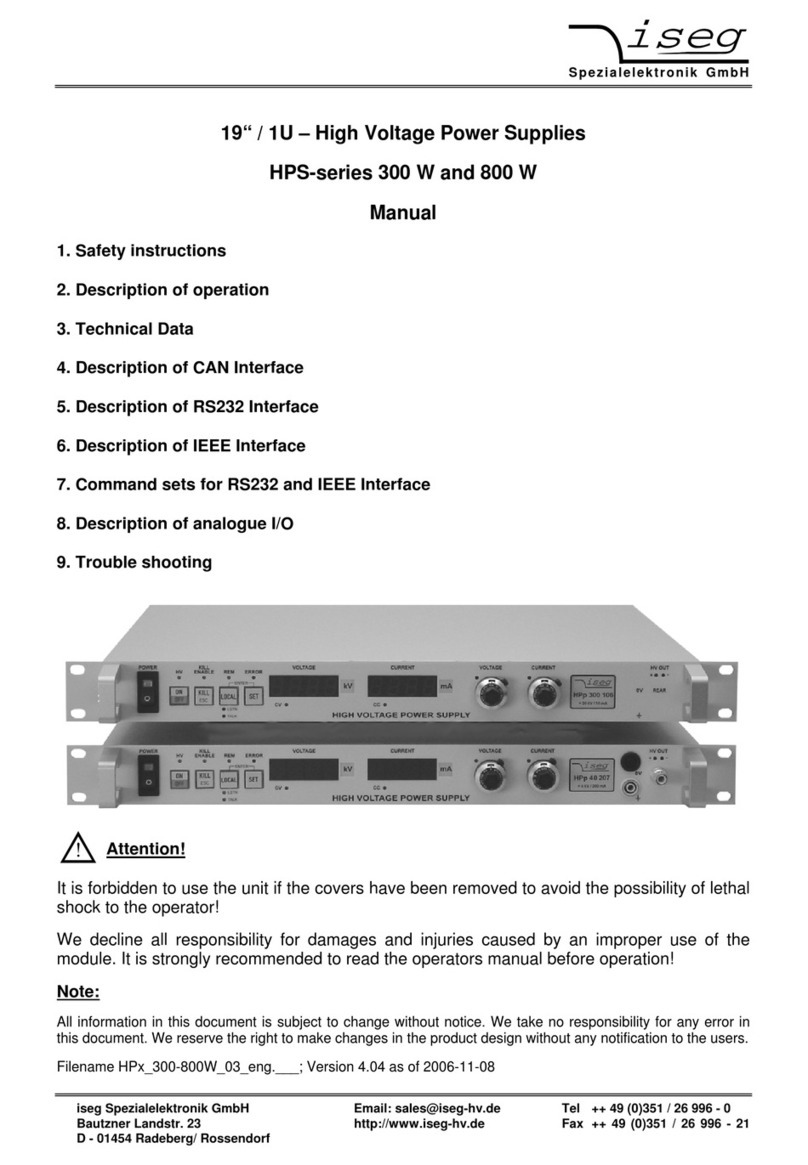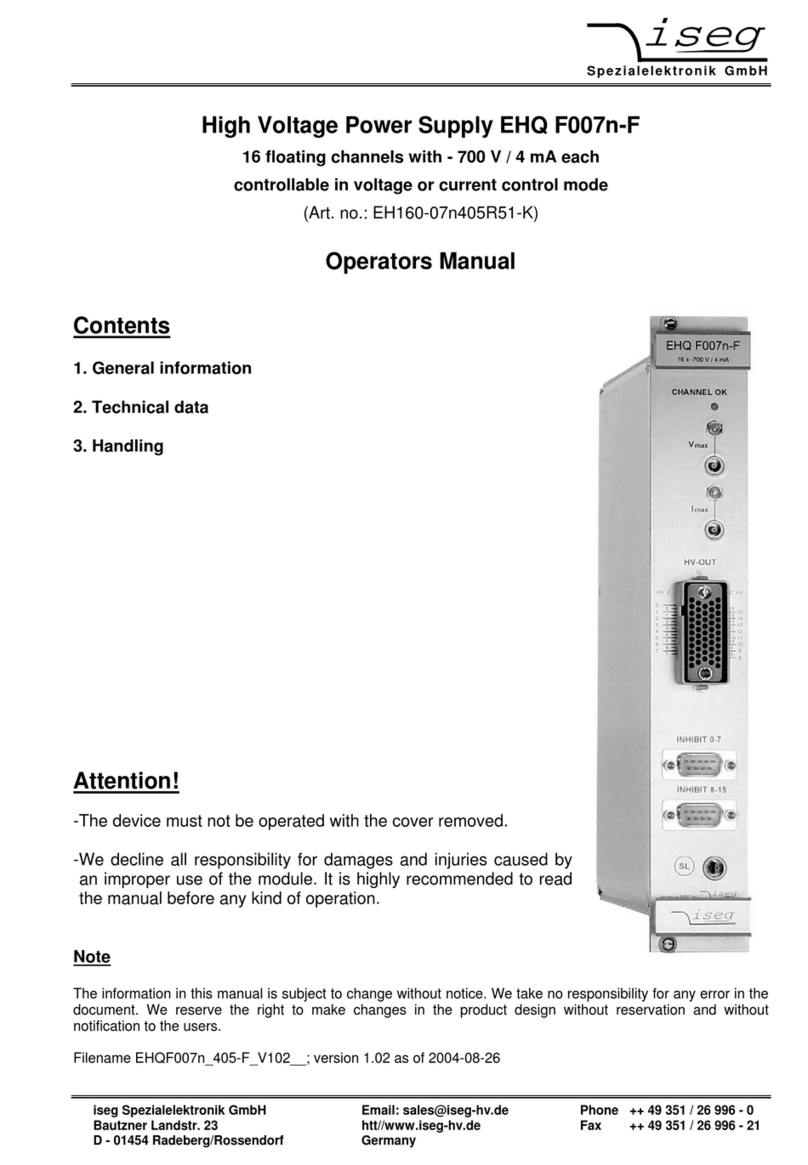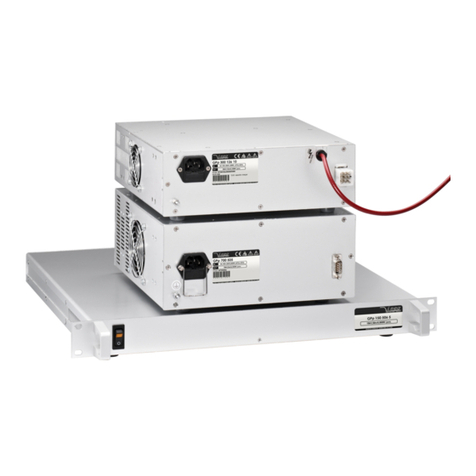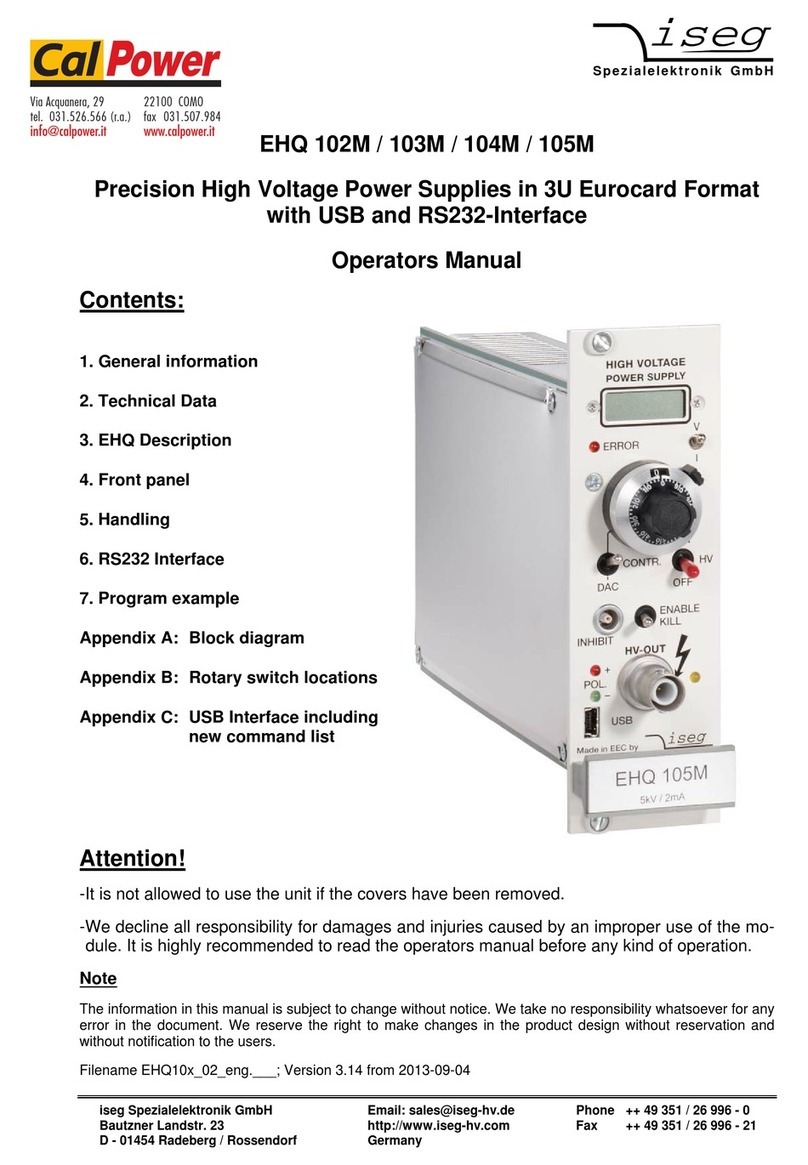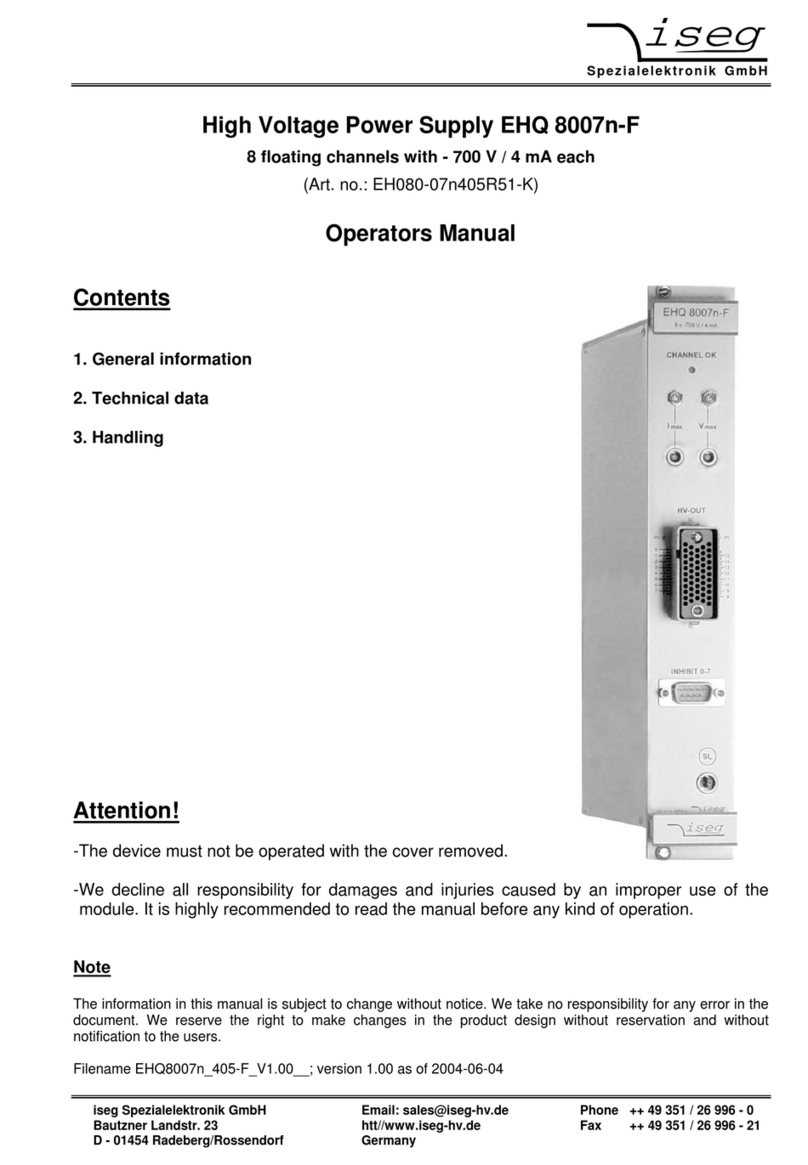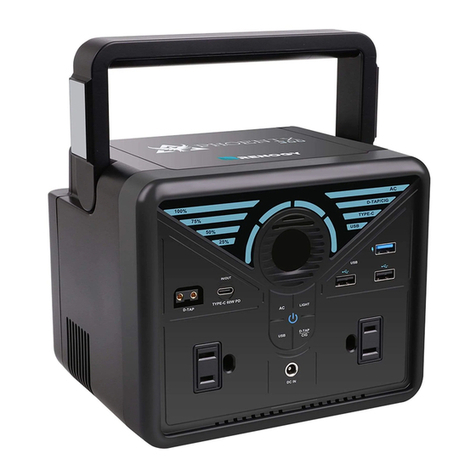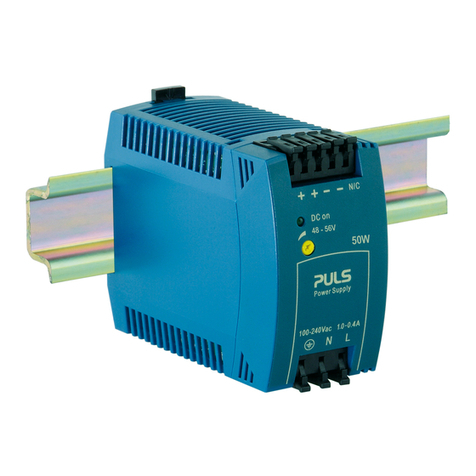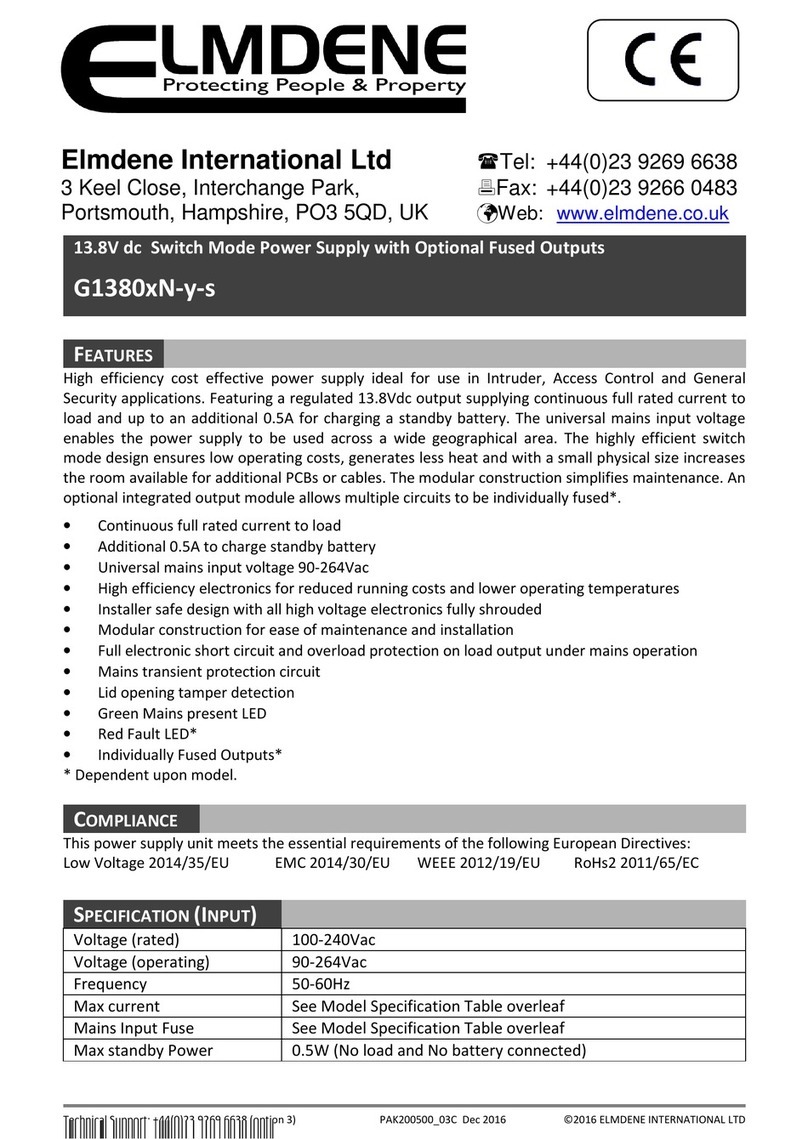
Spezialelektronik GmbH
Bautzner Landstr. 23 http://www.iseg-hv.com Fax ++ 49 351 / 26 996 - 21
2 D - 01454 Radeberg / Rossendorf Germany
1. General information
The NHQ x0xx is a one or two channel NIM High Voltage PS. The unit is 1 slot wide and offers either manual
control and remote control via RS232 Interface. Remote control is also optionally available via the CAN-Bus
interface according to the CAN specification 2.0 A. The use of remote control supports extended functionality
compared to manual control.
The high voltage supply provides high precision output voltage together with very low ripple and noise even
under full load. Separate 10%-steps hardware switches set voltage and current limits. An INHIBIT input protects
sensitive devices which are connected to the output. The maximal output current per channel is also
programmable via the interface. The high voltage output is protected against overload and short circuit. The HV-
GND is connected to the chassis and the powering GND.
2. Technical Data
NHQ 208L
2 x 8 kV / 1 mA
NHQ - one channel
- two channel 108L
208L 1010
2010
Output voltage Vout 0 to 8 kV 0 to 10 kV
Polarity of output voltage switchable factory fixed
Output current Iout 0 to 1 mA 0 to 0,5 mA
Ripple and noise f ≥1 kHz: max. 50 mVP-P
f < 1 kHz: max. 200 mVP-P
LCD Display 4 digits with sign, switch controlled
-voltage display in [V], -current display in [µA]
Resolution of voltage 1 V
measurement current
1 µA, with option 104: 100 nA at Iout max ≤100 µA
Accuracy voltage ± (0,05% Vout + 0,02% Vout max + 1 digit) for one year
current ± (0,2% Iout + 0,02% Iout max + 1 digit) for one year
Stability ∆Vout / VINPUT < 5 ∗10-5
∆Vout < 5 ∗10-5 (idle to max. load)
Temperature coefficient < 5 ∗10-5/K
Voltage control CONTROL switch in:
upper position - manual: 10-turn potentiometer,
lower position - DAC: control via interface
Rate of change of - HV -ON/OFF (hardware ramp): 500 V/s
Output voltage - control via interface (software ramp):2 - 255 V/s
Protection - separate current and voltage limit
(hardware, rotary switch in 10%-steps),
- INHIBIT (external signal, TTL-level, Low active),
- programmable current limit (software)
Power requirements VINPUT ± 24 V (< 800 mA, one channel < 400 mA),
± 6 V (< 100 mA), with option N24: only ± 24 V
Temperature range Operating: 0 . . . 50 °C Storage: -20 . . . +60 °C
Packing NIM Standard chassis: NIM 1/12
Connector (on the rear) NIM: 5-pin; Interface: 9-pin female D-Sub
8 kV 8 kV SHV Radiall male connector,
opt. Lemo straight socket PSA 1Y 410 CLL C57 (see 10kV)
HV connector
(on the rear) 10 kV Lemo straight socket PSA 1Y 410 CLL C57
(Couppler: Lemo straight plug FFA 1Y 410 CLA C57)
INHIBIT connector 1-pin Lemo-hub
